Cigar Boxes as Premiums
Something for (almost) Nothing
A National Cigar History Museum Exhibit
© Tony Hyman
Complete Upload: August 18, 2010
Two boxes added: October 7, 2010
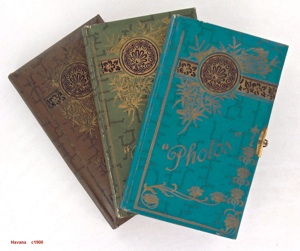

Cigar Boxes as Premiums
Something for (almost) Nothing
A National Cigar History Museum Exhibit
© Tony Hyman
Complete Upload: August 18, 2010
Two boxes added: October 7, 2010
The tobacco trade of the sixteenth, seventeenth and eighteenth centuries flourished despite pirates, smugglers, taxation, adulteration, and high prices. Smokers, chewers, and snuffers needed no encouragement to happily consume as much and as often as they could afford and blue laws would permit.
But the 1800’s was a new age. The spread of railroads, canals and steamships brought expansion, increased markets and a growing middle class. This meant wealth to be made and spent. And wherever there are people spending money, there are other people scrambling to attract it. Competition became fierce.
British smoking tobacco wrapper, circa 1805, with the customary blender - merchant’s name and address, but with the then recent addition of bonus riddles. This was an ideal form of premium because the customer had to return to the same shop to ask the answer. These can legitimately be called the first packages to be useful in and of themselves, since recipients would be likely to repeat the riddles to friends and relatives.
[14065]
Cash box
Reusable metal boxes were very popular in the heart of the Golden Age. You’ll find cash boxes, deed boxes, fishing tackle boxes, and boxes intended to be used as money boxes in a retail store. This CASH BOX sold full of cigars from Tinkham Brothers wholesale operation in Jamestown, N.Y.
Left: [3378] Below: [3380]
Cookie jar
Would you like to own this stunning cookie jar? All you had to do was smoke 50 of F.R. Rice’s cigars around the turn of last century. Rice was a promin-ent cigar maker and tobacco product wholesaler in St. Louis who used a number of different glass jars for his brands, MERCANTILE in particular. This ranks as one of history’s all-time most elegant retail packages. If you visit the Cigar History Museum’s exhibit of glass you will better see the “box’s” ID moulded into one of the center rosettes. A catalog from a maker of glass jars for the cigar industry shows these to cost the cigar factory more than the cigars inside. [2810]
Photo albums
Exquisite. That’s the best word I can think of to describe these turn-of-the-century Cuban cigar boxes designed to look like photo albums when given as a Christmas gift. The recipients were expected to store photos once their original contents were set on fire.
Lunch boxes
Numerous brands of chewing and smoking tobacco, and a few cigar brands, were packed in what were called then and now “lunchboxes” as that’s exactly what they were used for by workmen and school children.
Stash boxes
The earliest and most popular boxes designed to get the customer to buy the box were those shaped like books. Because they were wooden rectangles, they fit tax assessors’ definition of a standard wood box so are found (admittedly very rarely) being used in the early 1870s. Books were especially popular at Christmas time when Season’s greetings were inside and out.
“You’re a Jackass”
As they used to say on Monty Python, “now for something completely different.”
This marvelous box was one of those that appeared in late 1878 almost immediately after regulations changed to permit odd boxes. At first glance it looks ordinary. It’s only when the box is opened to give a cigar to a moocher, that the gag becomes clear.
Women’s Depression Era “Jewelry Boxes”
By the mid 1920s approximately 90% of all cigars made in the U.S. sold for more than a nickel. The machine age had begun, but small factories (those with less than ten employees) were able to compete with the machine- using giants like Bayuk, American, General and others. Their hand made products were aimed at the 10¢ and 15¢ cigar market that included most cigar smokers. Then came the crash of 1929. As the country sank deeper and deeper into the resulting Depression, more and more smokers couldn’t afford to smoke those 10¢ and 15¢ cigars. To supply smokers with cigars they could afford the big companies turned more and more to machines, enabling them to drop prices to rock-bottom. Their 10¢ cigars became a nickel; 5¢ smoke dropped to 2/5¢ in an effort to keep brand-loyalty through tough economic times. By the end of the 1930s, cigar prices had exactly reversed; now 90% of all domestic cigars cost 5¢ or less, and small companies were closing their doors, unable to make a profit on 5¢.
Box sales were especially hard hit.
Smokers bought cigars by ones and twos, not 25s and 50s. To sell more cigars by the box, many cigarmakers and wholesalers began packing cigars in attractive reusable boxes aimed not at men or children, but aimed at women. The husband bought, smoked the cigars then handed the empty to his wife, girlfriend or daughter, saying “Look what I bought you, honey.”
The boxes were made in more than 50 different interesting styles or colors in wood, tin and brass. The mirror frequently found on the inside lid confirmed its dressing-table destination.
Everyone agreed they were both pretty and useful. Since no one had the heart to throw out such attractive boxes, a great many have survived to appear on eBay where, if they sell, it’s at bargain prices under $20. These Great Depression Era boxes can be seen in two Museum exhibits. To see wooden ones go <here>; to see metal boxes go <here>.
PS: yes, the deco decal is original.
Mugs
Another Immediately useful “box,” this holding 25 cigars, was made about 1910 and used by Joe Weinrich, a Dayton, Ohio, cigar maker. It isn’t known which pottery company made these mugs found in two colors. Other pottery cigar mugs, in white glaze and different pattern, have been found as well as mugs made of tin, glass and a pewter-like alloy. An exhibit of mugs and bottles designed to hold cigars at retail can be seen <here>.
<w000>
Toy Truck
Can you imagine a greater cigar box toy? The cigar company offering 100 cigars in this 1930s masterpiece re-usable is K.V.W. in the Netherlands. There’s no indication how the original lid was attached or the material from which it was made.
[3437]
Log Cabins
The log cabin proved to be one of the most popular designs of early “premium boxes” specifically intended to be used as something other than a cigar box when empty. Not only were log cabins popular in the late 1870s and early 80s but they underwent revivals at the turn of the century and again during the Great Depression. Cabins were designed to catch the smoker’s eye, but also to be toys for the smoker’s children. Many different types of log cabins can be seen <here>. CABIN HOME (right) dates from the 1880’s, but is the most common cabin found today.
The cigar industry joins the battle of the premium boxes
The cigar industry was so much more scattered., involved so many factories, consisted of so many two-or-three-person factories, that stories of individual factories before the Machine Age blossomed in the 1920s are almost non-existent. As a result, it would be pure accident were we to discover give-away efforts as early as those of the tobacco and cigarette industries. There is one report of English-made cigars being wrapped in sayings or riddles around the same time as the tobacco wrapper shown above, but no examples exist to my knowledge. No other examples of the “package as premium” are known to me prior to the Civil War.
As told elsewhere, during that conflict the Federal government began regulating nearly every footfall of a cigarmaker, including the boxes they were packed in. Names, numbers and notices were all specified to some degree as was the form of the box. But all that changed in 1878 when rules regarding the form of cigar boxes were changed...drastically. Starting that year cigars could be packed in a wide variety of shapes and materials as long as they met two criteria: they contained 25, 50, 100, 250 or 500 cigars and a tax stamp could be affixed. A company planning some form of unusual package was required to bring a sample to the tax office to demonstrate the latter. And demonstrate they did. The years between 1878 to 1883 saw a bonanza of unusual packaging. You are encouraged to visit the Cigar History Museum’s exclusive gallery of Novelty Packaging.
The focus of this exhibit is on boxes intended in and of themselves to be useful in some way when emptied. Naturally, a good many of these are also considered to be novelty packaging, or boxes that fall into other categories.
In mid-century, Cuba took the lead in the development of premiums when they elaborated on that idea by creating the first mass-produced package specifically designed to appeal to collectors. At that time, cigarettes were sold in small paper-wrapped bundles containing from 10 to 25 smokes depending on the maker, blend and
RIGHT: How most of the world’s
cigarettes were packaged prior
to the mid-1880s and the invention
of the cardboard slide-pack.
BELOW LEFT: Susini issued
hundreds of labels in sets of
stamps, coins, uniforms and
other educational or humorous
topics
BELOW RIGHT: Susini rival,
Figaro, created a set of labels
portraying Cuban life
including these semi-nude
“beautiful Cuban women.”
You can visit two large exhibits giving a tour of the Susini operation and a look at 100 of the first premium labels .
These paper wrappers are another example of the package bringing added value to the product and encouraging sales.
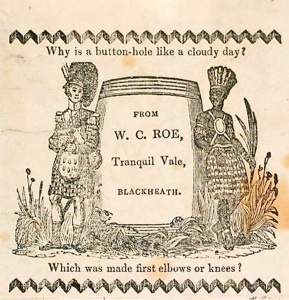
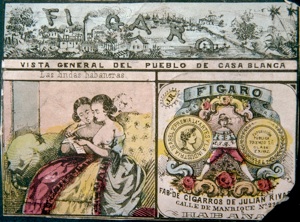

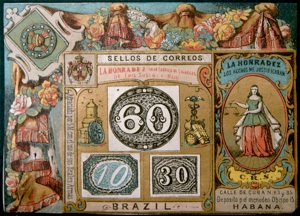
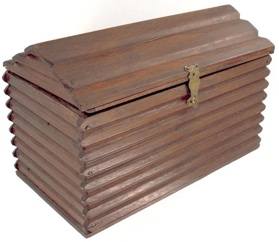

[3450]
[3451]
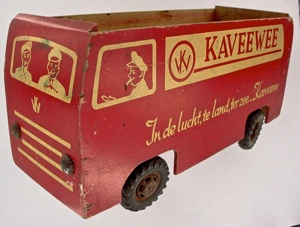
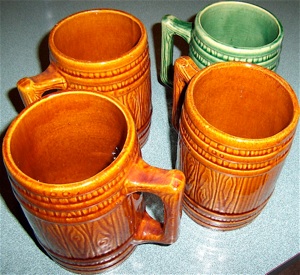

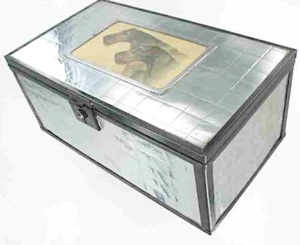
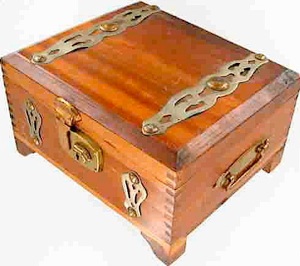
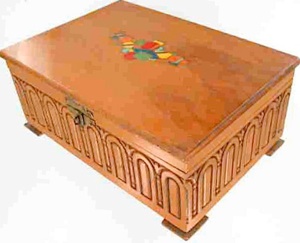
[11778]
[11782]
[11779]
[11781]
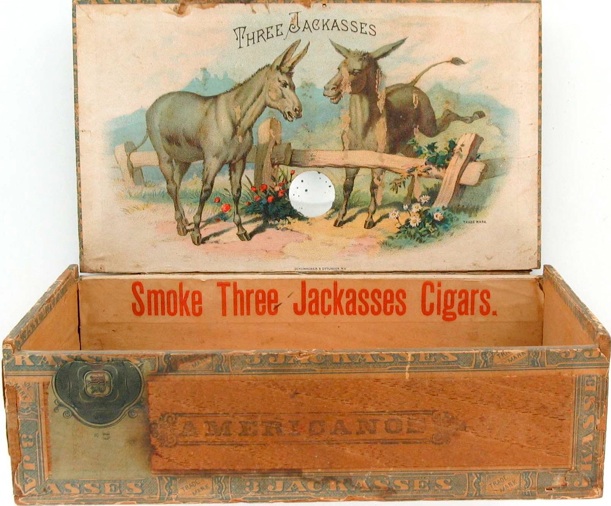
The inset mirror makes the person taking a cigar into the third jackass. The box was a hit with everyone who had friends who constantly bummed smokes.

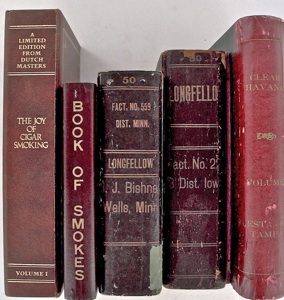

The LONGFELLOW box on the right was found in 1953, the first of about 100 different book boxes that have passed through my hands. It was actually found in a widow’s bookcase when she invited me in for a drink after I finished mowing her lawn. I recognized it as a cigar box because of the Factory ID on the spine. Until I removed it and showed her, she thought it was a book belonging to her late husband. Book boxes that are very realistic can, and often did, become hiding places.
A comprehensive exhibit of book boxes can be visited <here>.
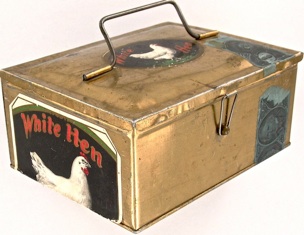



Though smallish for a photo collection, they were obviously intended to be kept. The gorgeous and expensive inner label (with no brand name as advertising) is proof of that supposition. The delicate use of paper lace inner edging dates back to the 1870s. Top: [4158] Left: [4160]
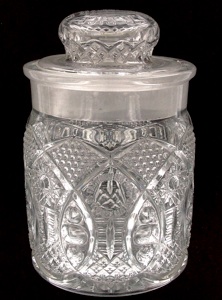
Letter File box
If you’ve ever cleaned out business records from the turn-of-the-century, you’ve seen these wooden letter file boxes. I wonder how many of them you handled were former cigar boxes. I was fortunate to not only find a used one of these, I later found a blank salesman’s sample along with the original advertising paperwork.
Traveling Desk
Social Game cribbage board box
Another imaginative cigar box created thanks to the law of 1878. America at that time was a land brought together by railroads so the fertile mind of E.C. Hazard, a New York wholesaler who created other equally interesting packages, began selling this box whose borders read “Companion for tourists and the leisure hour; voyagers and tourists social time companion; friendly entertainment; instruction and amusement.”
Hazard’s box contained 50 cigars, a deck of cards, six pegs and the rules of cribbage as an inner label. I sold a duplicate of this box to a collector in Australia who told me this box made his 5th different cribbage-based cigar box. The Museum only owns one other, which can be seen in the exhibit of game-related cigar boxes. Visit; you’ll be surprised.
Zero Cigars
A novelty reusable which contained a calendar and a working thermometer. Cigars were made by Frank Pcnaski, a two man shop on 5th Ave in NYC. This was a good idea. If someone bought one of these and kept it in their den or on their office desk, a new box was issued each year. I don’t know how long they did that, but have seen one with an 1884 calendar instead of the 1887 in this box.
[3381]
The ultimate re-usable game box
This fabulous inlaid box of 250 cigars with built-in combination checkerboard with a backgammon board inside is as good as it gets. Hand inscribed inside “A. P----- for honorable account, July 27, 1882.” Trade Mark inside lists maker as De Capo Cigar Factory. The ID identifies the factory as Fact. 368, 3rd tax district of NYC, a two man factory owned by Adolph Rothbart at 2057 2nd Ave.
A “tour jacket” box
You’ve all seen those tour jackets worn by rock and roll groups’ staff and fans that list the cities in which the band has played or will be playing in. Something new, from the modern era? An innovation of the Woodstock generation? Nope. Just another clever idea first conceived and executed by the cigar industry.
Want to know where he’s playing next? Being 1912, there’s no email address for more info, but the box was a lot cheaper than a jacket and he makes the same circuit each year... You’d better keep the box.
[7906]
[9878]
These may have been made for 20 years or so, possibly by different companies. My material is all from Wing Cigar Company, Columbus, Ohio.
Top: [3398]
Left: [3399]


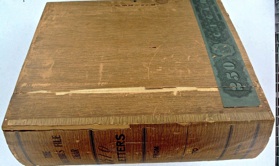

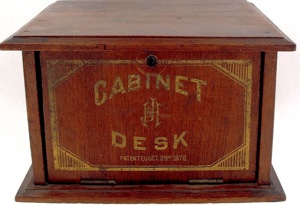
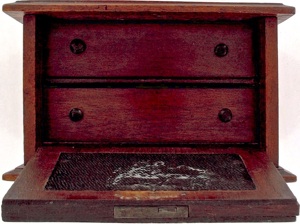

[3387]

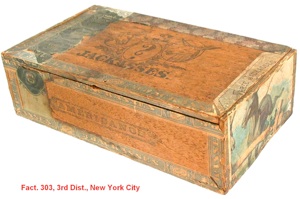
[18020]

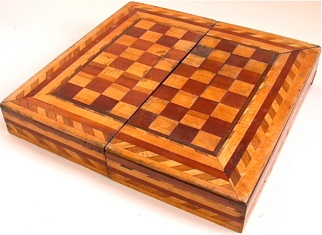
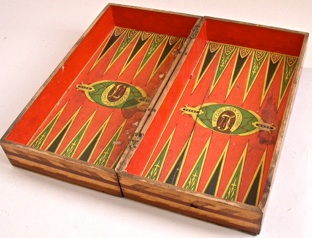
[8838]
[8839] [8840]
A “phone book” box
The year is 1904. You work for the Pabst Brewing Co. of Wausau, Wisconsin. It’s the opening day of fishing season and you want to let your boss know you’re sick so you can be at the lake just as the sun comes up and the pike start biting (you’ll forget to tell him that last part). You’re one of the fifty or so people in town with one of those new-fangled telephones, but you can’t remember the company’s phone number. You could ask the operator, but this is a small town and it’s none of her (or anyone else's) business. What do you do? The answer is: you do what any other red-blooded Waukausauian would do...you look on the lid of a cigar box. There it is. Pabst’s phone number is 87.
“Jes’ goes to show if’n you wanta call some’un, you better smoke HELLO cigars... and keep the box.”
Potted Cigar Humidor
In 1901 A.C. Brenckle of Milwaukee had a good idea: attract customers by packing cigars in large heavy unglazed pots and put a water reservoir in the lid so the pots could be reused as humidors.
Unfortunately the pots weighed a ton and tended to break easily. Cracks often formed where the sides and bottom met. Unless the smoker set the lid on very gently, the lid or the side chipped. Weird green and black fungus tended to grow in the lids. The pots were expensive to make.
But other than those problems...it was a good idea.
[2840]
You can bank on these
There have been a few Canadian reusables, an outstanding TENNYSON cash-box with a lift-out tray in particular. Most Canadian boxes, like this one, were difficult to find until eBay made it possible to conveniently locate and buy cigar boxes from around the world.
The bank hole was made by the box manufacturer and originally covered with a paper sticker. Catalog card is incomplete and this box is in storage so more info is not available at this time. Sorry.
Top right: [2838]
This Christmas “Holiday Greetings” jar packed with 25 R.G. DUN Directors was deemed a “Smoker’s Bank” by its maker. Made of wood, clear acrylic and metal, this is the only example that’s popped up on eBay since that auction service began more than a decade ago. This bank came with a key to unlock it center post, releasing the bottom and enabling the saver to get to his or her money.
Left: [18365]
Right: [18364]
Canadian Whatchama call it?
One of history’s all time more unusual reusables originally held 25 cigars made by H. Simon and Sons of Montreal in the 1920s. Best guess is that it was intended as a desk accessory. The tin is a moderately heavy gauge, not easily bendable, certainly stronger and more durable than needed to hold a few cigars. The blank card on the upper right slips easily into what is an obvious holder, and what probably held the brand name and maker of the cigars. It is easily reusable, to label any way the reuser sees fit. The holder is bent in such a way it acts as a spring clip, thus able to hold a small note pad. This is the only box in six decades of collecting that I’ve seen with the entire Caution Notice embossed into the bottom, not just the ID as required by law. Evidence suggests it’s made from a now-oxidized copper-colored metal.
Box Makers got into the act
The companies that made cigar boxes frequently sent samples, more often than not in what is called “nailed wood with hardware.” These attractive little (4.5” x 3” boxes too were designed to be reusable...as match boxes in the kitchen or on a smoker’s desk.
[3280] [3282]
English Cigarette Companies Create a Terrific Reusable
Not much is known about Nicolas Sarony & Company’s most distinctive Monte Carlo Cigarette tin game box. It came with cigarettes, a spinner, betting chips, and a four age booklet Rules of Roulette as played at Monte Carlo.

[18918]
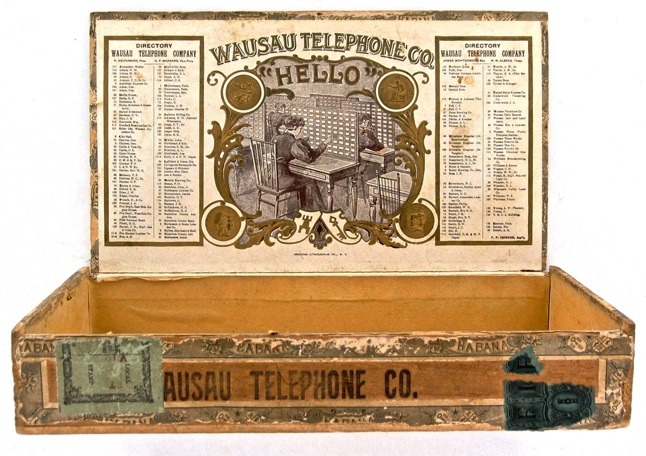
[1521]

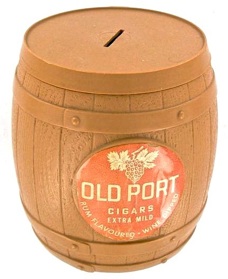
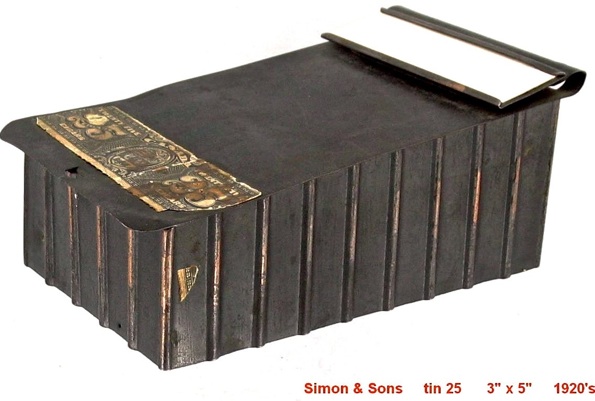




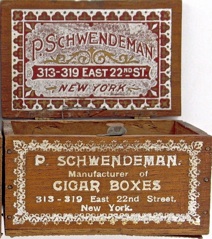
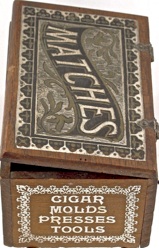
[3397]

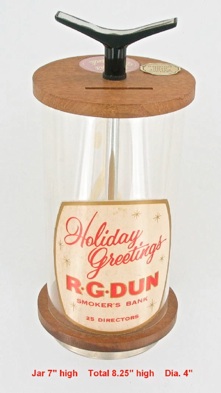
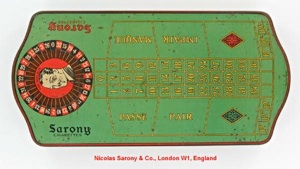
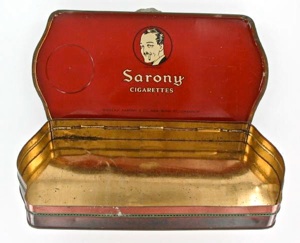
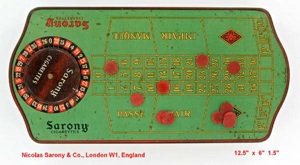
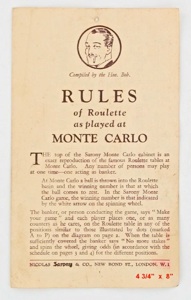

TOP: 12.5” tin as usually found.
MIDDLE: Tin open
BOTTOM: Tin with spinner and chips in place
LEFT: Rulebook packed inside with cigarettes